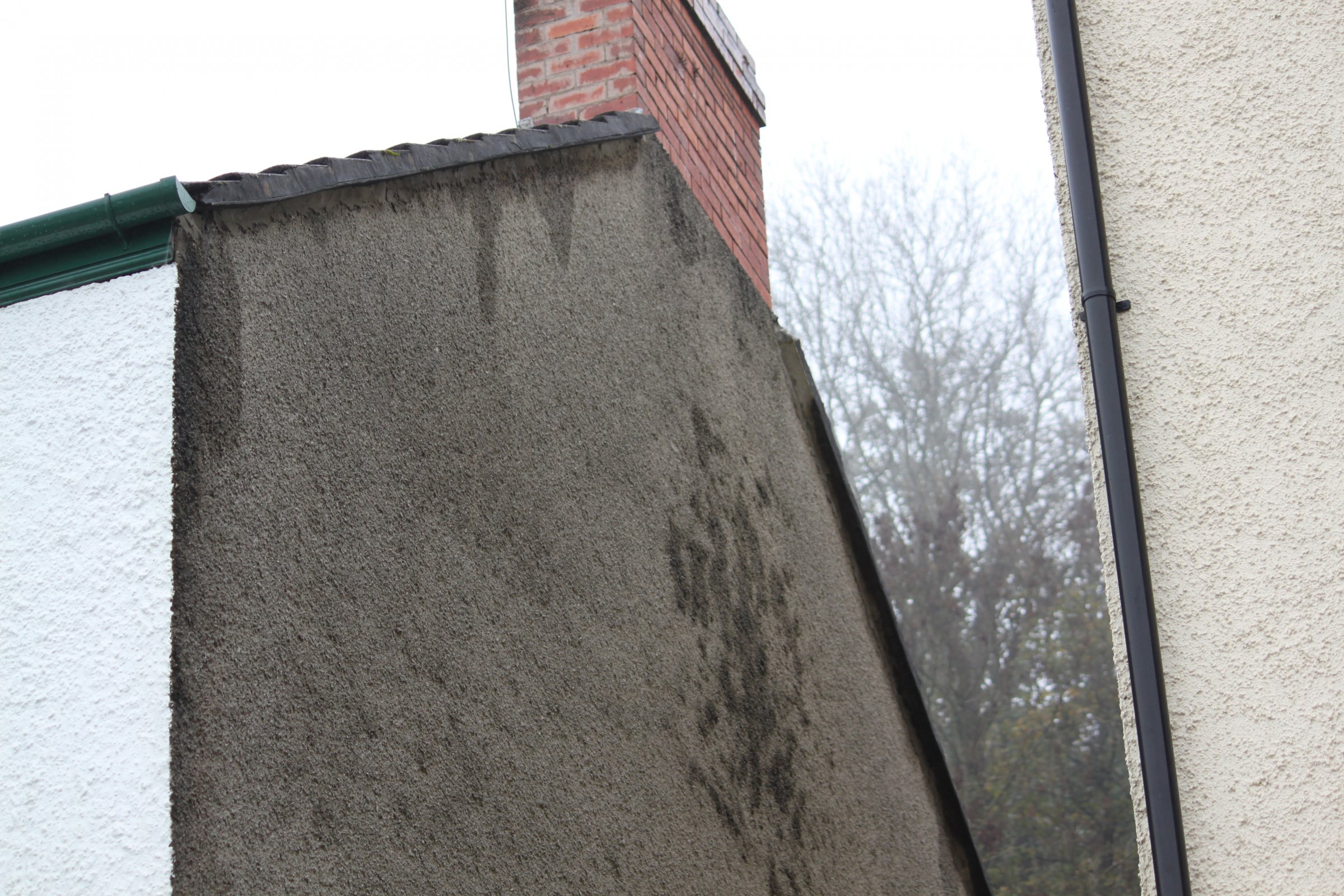The chimney has 4 chimneys pots all with ventilated cowls.
The wet in seen mainly under the archway created by the joining of the separate flues.
The interior wall was plasterboarded and dampness soaked some of the plasterboard when it rained. (See photo)
Thinking there was a leak dripping inside I removed the plasterboard but no leak drips internally on the brick wall even in adverse weather conditions. (photo)
Externally 3 chimney elevations have been repointed, the flashing inspected on all elevations and new concrete was put on the top of the chimney when the 4 cowls were positioned. Also the external wall on the pine end has been inspected and appears sound as there is no evidence of 'blown' render.
Today it has rained hard and the pine end has shown a particular wet pattern (photo). After it has rained, this pattern is more or less in the same position.This marking is there to a lesser extent even when it is not raining.
Has anyone any idea what might be causing this water damage?
Thanks
Stewart






